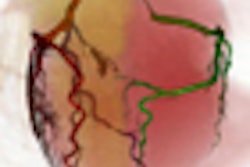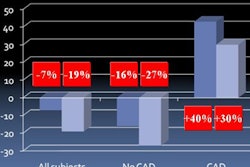A university hospital in Pakistan was able to reduce its x-ray retake rate from 5.5% to 1% after converting to digital x-ray. The study highlights the efficiency gains possible through filmless x-ray imaging, even at imaging facilities in developing countries.
Researchers from Aga Khan University Hospital in Karachi decided to study digital x-ray's impact on lowering retake rates as part of the facility's conversion to digital imaging in 2005. They were particularly concerned with digital x-ray's effects on efficiency at their hospital -- the high price tag of digital relative to conventional radiography can make it cost-prohibitive for many facilities in developing countries unless operational cost savings can be generated to offset the initial capital equipment expense.
"There is a need to determine the balance between benefits among digital and conventional radiography not only in terms of cost but also relating to other factors like effectiveness of the procedure in terms of quality of x-ray, time expenditure [on] both system[s], feasibility of implementation and operation, public demand, etc.," wrote Dr. M. Nadeem Ahmad and colleagues in their paper, published in March 2008 in the Journal of the College of Physicians and Surgeons Pakistan (Vol. 18:3, pp. 151-153). "Film reject analysis is a well-established indicator of quality control in [a] radiology department."
The authors collected data on retake rates from January to December 2004, when the hospital relied on conventional x-ray, and compared the information to data from January to December 2006, after the hospital completed its transition to digital x-ray by purchasing computed radiography (CR) equipment (Fujifilm, Tokyo). The researchers did not include data from 2005, which was a transition period to digital x-ray.
During the 2004 study period, the facility repeated 9,423 conventional x-ray exams out of a total of 170,300, for a total retake rate of 5.5%. The most commonly stated reason for retakes was underexposure, at 38% (for a complete retake analysis, see the chart below).
The researchers then analyzed the retake rate following a full year of digital operation. They found that only 1,464 exams were repeated, for a retake rate of 0.8% out of a total of 174,550 studies. With digital x-ray in place, the most commonly stated reason for retakes was positioning error, in 30% of studies.
|
Ahmad and colleagues noted that their analog retake rate of 5.5% was within the range of 3.2% to 11.6% in the published literature. The 0.8% retake rate for digital x-ray was below the 2.3% retake rate reported in a related study (Radiation Protection Dosimetry, March 2001, Vol. 94:1, pp. 69-71).
The lower retake rate with CR was due to the ability of radiographers to postprocess images on preview monitors, Ahmad said in an e-mail to AuntMinnie.com. The high retake rate related to positioning error with CR indicated the importance of advanced training for radiographers, the authors wrote.
In addition to the lower retake rate, the authors found that digital x-ray eliminated the variable image quality that can result from different film processing procedures with analog radiography. Going digital also eliminates costs associated with film and film archiving, another benefit in developing countries like Pakistan, the authors wrote, although additional studies are needed to validate this point.
The authors concluded by acknowledging that the high initial cost of digital x-ray can be an impediment to going filmless, but it could be justified at hospitals where patient volume is high.
"In large secondary and tertiary hospitals in our country, which are dealing with the bulk of patients, this technology can prove effective in terms of economy and time computation," they wrote.
By Brian Casey
AuntMinnie.com staff writer
June 30, 2008
Related Reading
Global radiation dose higher than necessary, June 3, 2008
Study examines reasons for CR image rejections, May 12, 2008
Studies examine digital methods for reducing pediatric x-ray dose, October 9, 2007
PACS data-mining technique tackles CR dose creep, July 30, 2007
DICOM-compliant displays aid CR/DR exposure control, July 17, 2007
Copyright © 2008 AuntMinnie.com



















